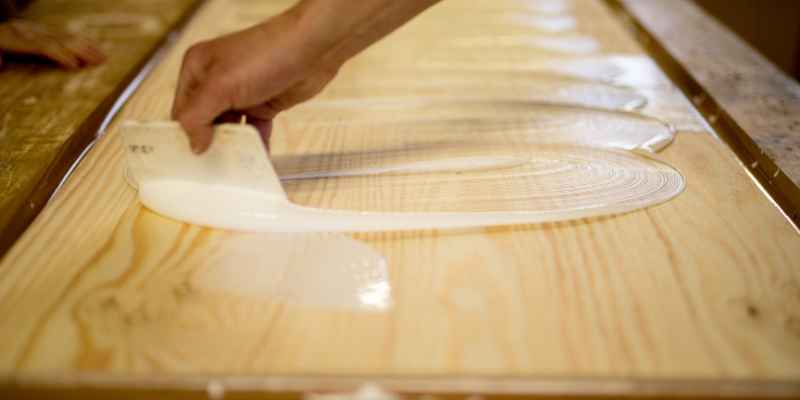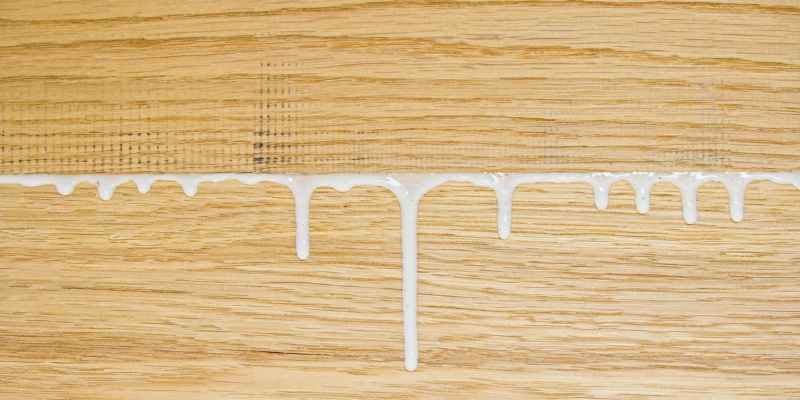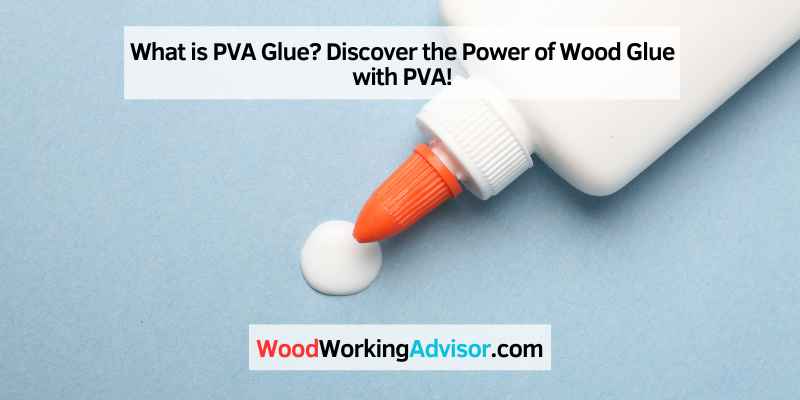PVA glue, also known as wood glue, is a type of adhesive commonly used in woodworking projects. It is made from polyvinyl acetate, a synthetic polymer that adheres well to porous materials like wood.
PVA glue is known for its strong bonding properties, quick-drying time, and ease of use. It is a versatile adhesive that can be used for various applications, including joining wooden pieces, bonding paper and cardboard, and even for certain craft projects.
PVA glue is non-toxic and solvent-free, making it safe for both indoor and outdoor use. It is a popular choice among DIY enthusiasts and professionals alike due to its reliability and affordability.
What Is Pva Glue?
PVA glue, also known as polyvinyl acetate glue, is a popular type of adhesive commonly used in woodworking
projects. It is a versatile glue that offers a strong bond, making it suitable for a wide range of applications.
Its adhesive properties and ease of use have made it a favorite among DIY enthusiasts, craftsmen, and
professionals alike.
Definition
PVA glue, in simple terms, is a type of glue made from polyvinyl acetate, a synthetic polymer. It is a
water-based adhesive that is widely regarded for its bonding strength and ability to create a durable bond
between various materials. PVA glue is known for its quick drying time, making it ideal for different
woodworking projects.
Composition
PVA glue primarily consists of synthetic polyvinyl acetate polymer particles dissolved in water. It may also
contain various additives, such as plasticizers, fillers, and thickeners, which enhance its performance and
improve its adhesive qualities. The specific composition may vary slightly depending on the brand and intended
application, but the basic components remain consistent.
| Additives | Function |
|---|---|
| Plasticizers | Increase flexibility and adhesion |
| Fillers | Improve viscosity and prevent sagging |
| Thickeners | Enhance clinginess and make it easy to apply |
Due to its water-based nature, PVA glue is non-toxic and safe to use. It is easy to clean up with water before it
dries, which is advantageous during woodworking projects where excess glue may need to be removed.

Advantages Of Pva Glue
PVA glue, also known as wood glue, offers numerous advantages for various applications. Its strong adhesive qualities, fast drying time, and versatility make it ideal for woodworking projects, paper crafts, and even as a sealant for porous materials. Whether you’re a DIY enthusiast or a professional, PVA glue is a go-to choice for reliable bonding.
Versatility
PVA glue, also known as wood glue or polyvinyl acetate glue, offers various advantages that make it a popular choice among DIY enthusiasts, craftsmen, and woodworking professionals. One of the key advantages of PVA glue is its versatility. It can be used on a wide range of materials, including wood, paper, fabric, and cardboard. This makes it an essential adhesive for various projects, whether you are working on furniture repairs, scrapbooking, or creating crafts with your kids.
PVA glue provides a strong bond that can withstand everyday wear and tear. It dries clear, giving your projects a professional finish without any unsightly residue. Whether you are joining wooden planks to build a shelf or gluing together delicate paper cutouts for a collage, PVA glue is a reliable choice that ensures a durable and long-lasting bond.
Ease Of Use
Another advantage of PVA glue is its ease of use. It is a water-based adhesive, which means it is easy to clean up and does not emit strong fumes. Whether you are a professional or a beginner, PVA glue is user-friendly and can be applied with precision using a brush or a nozzle. Its smooth consistency allows for even application, ensuring a strong bond every time.
Unlike some other adhesives, PVA glue does not require any special equipment or tools for application. It can be easily squeezed out of a bottle or spread using a brush, making it a convenient choice for all your woodworking and craft projects.
Drying Time
PVA glue offers a relatively quick drying time compared to other types of adhesives. This allows you to complete your projects in a timely manner and move on to the next steps without waiting for hours for the glue to set. While the drying time may vary depending on factors such as temperature and humidity, PVA glue typically sets within a few hours, allowing you to continue working without delays.
However, it is important to note that the complete curing time of PVA glue may take up to 24 hours or more, depending on the thickness of the glue layer and the materials being bonded. It is best to follow the manufacturer’s instructions for optimal results.
In conclusion, PVA glue offers several advantages that make it a go-to adhesive for various woodworking and crafting projects. Its versatility, ease of use, and relatively quick drying time make it a reliable choice for both professionals and DIY enthusiasts. So, whether you are fixing furniture, creating art, or bonding materials together, consider using PVA glue for strong and reliable results.
Applications Of Pva Glue
PVA glue, also known as wood glue, is a versatile adhesive commonly used in woodworking projects. It is ideal for bonding wood, paper, fabric, and other porous materials. PVA glue dries clear and provides a strong and durable bond, making it an essential tool for DIY enthusiasts and professional carpenters alike.
Introduction
PVA glue, also known as wood glue, is a versatile adhesive that finds applications in various industries. Its strong bonding properties, ease of use, and versatile nature make it a popular choice for a wide range of projects. In this article, we will explore the different applications of PVA glue and how it can be effectively used in woodworking, crafts and DIY projects, as well as in paper and cardboard.
Woodworking
In the field of woodworking, PVA glue is an essential tool for both professional carpenters and DIY enthusiasts. Its ability to bond wood surfaces together securely and efficiently makes it an excellent choice for joinery and furniture production.
Here are some key benefits of using PVA glue in woodworking:
- PVA glue dries clear, leaving no visible residue or marks, resulting in seamless finishes that enhance the aesthetic appeal of woodwork.
- It has a high bonding strength, ensuring reliable and long-lasting connections between wood pieces.
- The glue is non-toxic and easy to clean up, making it safe to use and ideal for projects involving children.
- It is moisture-resistant, making it suitable for outdoor applications or areas exposed to humidity.
- PVA glue is also versatile, compatible with various wood types and able to bond wood to other materials such as fabric or paper.
Crafts And Diy Projects
PVA glue is a go-to adhesive for crafts and DIY projects due to its affordability, accessibility, and versatile nature. It offers a range of applications and possibilities for creative individuals looking to bring their ideas to life.
Here’s why PVA glue is widely used in crafts and DIY projects:
- PVA glue has a fast drying time, allowing for quicker project completion.
- It can bond different materials together, such as paper, fabric, plastic, and more.
- The glue’s ease of use and strong adhesion make it suitable for various crafting techniques like decoupage, collage, and paper mache.
- It is readily available in different quantities, making it convenient for small-scale projects or larger undertakings.
- PVA glue is also compatible with various finishes, allowing for customization and experimentation in creating unique crafts.
Paper And Cardboard
When it comes to paper and cardboard applications, PVA glue reigns supreme. Its properties make it an ideal choice for projects involving these materials, whether it’s in a school setting, office work, or crafting.
Here are some advantages of using PVA glue with paper and cardboard:
| Advantages |
|---|
| PVA glue is acid-free and safe to use on delicate or valuable paper documents. |
| The adhesive is solvent-free, ensuring it won’t cause any damage or discoloration to the paper or cardboard. |
| PVA glue allows for repositioning and correction before it dries, making it ideal for precision work. |
| It provides a strong bond between paper and cardboard, ensuring the longevity of the project. |
| Due to its non-toxic nature, PVA glue is perfectly safe for children to use in their school projects or creative endeavors. |
In conclusion, PVA glue is a jack-of-all-trades adhesive that finds applications in various industries. Its versatility, bonding strength, and ease of use make it an indispensable tool in woodworking, crafts, DIY projects, as well as in paper and cardboard applications. Whether you’re a professional carpenter, a creative hobbyist, or simply looking for a reliable glue for your paper needs, PVA glue is a fantastic choice.
Tips For Using Pva Glue
PVA glue, also known as wood glue, is a versatile adhesive that is commonly used in woodworking projects. It bonds quickly, dries clear, and is easy to work with, making it a popular choice for crafts and DIY projects. Whether you’re repairing furniture or creating something from scratch, these tips can help you make the most out of your PVA glue.
Surface Preparation
Before applying PVA glue, ensure that the surfaces you plan to bond are clean and free from dust, oil, or any other contaminants. Using a clean cloth or brush, remove any debris or loose particles from the surface. If necessary, lightly sand the surface to create a better bond.
Proper Application
When using PVA glue, apply a thin, even layer to one surface and press the second surface firmly onto it. Make sure to align the pieces accurately before applying pressure. Apply clamps or use weights to keep the surfaces in contact until the glue dries. Use a clean cloth or brush to remove any excess glue that may squeeze out along the edges.
Cleanup
Cleaning up after using PVA glue is relatively easy. If any glue spills onto your hands or work area, wipe it off immediately with a damp cloth. PVA glue can be easily removed with water when it is still wet. However, if the glue has dried, it can be more challenging to remove. In such cases, it may be necessary to use a scraping tool or sandpaper to gently scrape or sand away the dried glue. Always test any cleaning method on a small, inconspicuous area before applying it to the entire glued surface.

Frequently Asked Questions Of What Is Pva Glue Is Wood Glue Pva Glue
Is Pva Wood Glue The Same As Pva Glue?
PVA wood glue is a type of PVA glue, specifically formulated for wood projects. They have similar ingredients and characteristics, making them suitable for general bonding. However, PVA wood glue has added substances for better adhesion to wood surfaces.
What Is A Substitute For Pva Glue?
A substitute for PVA glue is white craft glue, which is also known as school glue or liquid glue. White craft glue can be used for a variety of projects and is readily available at most craft stores.
Is Gorilla Wood Glue Just Pva?
No, Gorilla Wood Glue is not just PVA. It is a specially formulated adhesive that offers superior bonding strength and is designed specifically for wood surfaces.
How Strong Is Pva Glue On Wood?
PVA glue is strong on wood due to its strong adhesive properties. It provides a durable bond that is resistant to moisture and temperature changes, making it ideal for various woodworking projects.
Conclusion
To sum up, PVA glue, also known as wood glue, is a versatile adhesive that is widely used in woodworking projects. Its strong bonding properties and ease of use make it a popular choice among DIY enthusiasts and professionals alike.
Whether you are working on a small craft project or building furniture, PVA glue is a reliable option. Its affordability and availability make it a go-to adhesive for woodworkers of all levels. Incorporate PVA glue into your woodworking arsenal for reliable and durable results.


